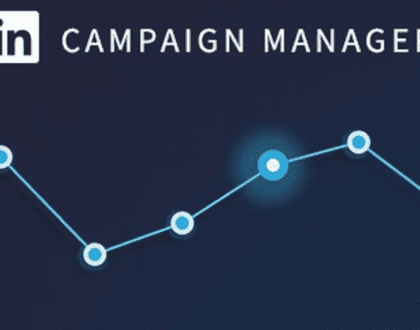Top Tips For Tracking Digital Marketing – Tagging
by EnyOsung
This post was originally written by a good friend of mine, Simon Thomas, an expert digital marketer and whizz at data analysis. It is reposted here (with minor edits) with his permission. You can see the original post on the Bubblechamber Digital website.
When you undertake your marketing activity, do you know exactly how much money you make from it? If the answer’s yes (and you’re not delusional), I bow down to you. You are a rare and precious creature.
For most of us most of the time, it’s tricky to accurately attribute income to spend but it’s possible and crucial if you are to avoid wastage of time and money. Provided your online sales function talks to your analytics package, then you can see the direct return on your investment.
It’s important for entrepreneurs to get their hands on the best data possible to turn build their businesses rapidly, sustainably, and effectively. Google Analytics is an essential tool for this kind of data. At the time of writing his article in October 2015, Neil Patel found that 29,614,741 websites were using Google Analytics, which just goes to show that many businesses it is one of the best around!
True, you don’t always know what effect it has on offline sales (that’s another whole area of investigation) or on generic brand-building, and there’s the issue of how much influence each channel has for a given sale – see my earlier post on attribution modeling– but you can always track immediate return, which is a great place to start.
Rather than assuming that every kind of marketing activity gets the same response (a dangerous leap of imagination), you can precisely monitor the value of the main strands and channels. I find that they can be surprisingly consistent, so if, for instance, the bulk of your sales come from a combination of organic search and direct traffic, with social media and email making relatively low contributions, it tends to be like that all the time. At least, that’s the case for a mature business.
That’s helpful and can allow you to build a better picture of the strength of the different channels than if they veer all over the place e.g. sometimes Facebook’s on top, now it’s email, now it’s Google search. Of course, there will be variation dependent on what activity you are currently doing but, in my experience, the strongest (say Google at 60% and Direct 20%) always account for the bulk of the sales.
By tracking a) traffic to your website, b) goal completions (say clicks on the buy button) and c) transactions, all broken down by traffic strand, you can see how valuable each channel is, both in terms of the amount of money they’re bringing in and their efficiency. By that I mean, how effective they are in relation to size.
You might find that one of your smallest contributors is nevertheless your most efficient converter e.g. a referring website that sends well-qualified visitors who buy higher priced products and make a disproportionate contribution to total income.
Here’s a real-life example of that (name changed to protect the innocent):
www.referringsite.com contributes only 0.7% of traffic but converts at a much higher rate and, with a higher than average transaction value as well, accounts for 6% of total income:
* clicks on buy button
These are actual figures for one week for a website I currently work on.
So, in the case of referringsite.com 0.7% of web traffic has generated 6% of the income whereas for search traffic 50% of traffic has brought in 50% of income. Focus your attention on increasing the traffic (without losing quality) from referringsite.com and you can get real leverage.
TAGGING YOUR LINKS
Google Analytics breaks your traffic down into standard categories but what’s really helpful is tagging your links, so you know the return on every single thing you do – not just which email converted but which link within emails did the work.
So, how do you tag your links? There are a number of ways to do it but my preferred method is building the parameters on the URL with Google’s URL Builder.
What you have to be careful of is ensuring that the data is analyzable at the end of it. A mass of different links can be difficult to batch together, so your tagging has to be consistent and clear. Be organized and make sure the person doing the tagging communicates with the person analysing or you’ll get in a right mess.
Don’t tag everything separately if you don’t need to but, if you want to know which link in an email has driven what traffic and sales, then create a new tag and be sure you know what it relates to.
The problem with building the parameters is you end up with a long and ugly address, which you don’t want your customers to see, for instance:
www.mysite.com/?utm_source=Email&utm_medium=May%20Newsletter&utm_campaign=may%20newsletter
That will appear in your Google Analytics as Email / May Newsletter but you don’t want to put it before your customer like that, so having built it up you now have to break it down into something more presentable, by using a URL shortening service like bitly:
http://bit.ly/1A2AH5X
It will retain all the tagging but be more attractive to the end user, which is really useful if you’re using it somewhere like Twitter where the customer sees the link. If it’s embedded it’s not a problem.
ANALYSING YOUR DATA
What you can also do, now that you’ve isolated the activity you want to, whether it’s a campaign, a single email/Facebook post or a link within one of those, is create a filter on Google Analytics for just that activity and find out everything about what those visitors did on your site.
The possibilities are endless for gaining new insights into how your marketing activity is working, through the simple process of tagging your links. If segmentation is one of the top tips for analyzing data (and it is), this is a way of doing it at a granular level.
CONCLUSION
For most small businesses, money is always tight. Good data analysis of your marketing activities is key to avoid wasting time and money on fruitless marketing activities. Tag links and analyse your analytics data to understand your customers’ journey and route to purchase. This process helps to work out where to invest more of your budget as well as what you may want to do less or stop altogether. Good luck with your marketing!
ABOUT BUBBLECHAMBER DIGITAL
Simon Thomas, who has 25 years of marketing experience, primarily in the entertainment industry, runs Bubblechamber Digital. Bubblechamber Digital has a team of associates with expertise in many areas including strategy, website development,email marketing, web analytics, video production, social media and customer research.
**************************************************************************************************************************************************************************************
smallbiz-emarketing provides expert market research, marketing on all digital platforms and offline advertising consultancy specifically for small businesses and start-ups for whom money is tight. Checkout our Services page to see how our digital marketing services can help your business to get more customers and sell more, faster. Also checkout our Prices page to see our genuinely affordable digital marketing packages for small businesses and startups. Why not sign up for our newsletter using the simple form on the right? You can also follow us on social networks. Finally, we’d love for you to share this post with your network using the share buttons below.
**************************************************************************************************************************************************************************************
We’d love to have your feedback and suggestions about this post. Is it helpful in your data analysis? Which strategies have you found most helpful in working out the Return on investment of your marketing activities? Please leave your comments in the Comments Section below.
Other posts you may like
Psychological Pricing Strategies Guide – 9 secrets to sell more
How to actually stop dangers to customers’ information
Making sure the price is right
–
Our Digital Marketing Services:
Search Engine Optimisation| Content Development & Marketing| Email Marketing| Pay-Per- Click| Social Media Marketing| App Development & Marketing
HOME | ABOUT | BLOG | TESTIMONIALS
Recommended Posts

Eny talks with Lydia on The Joyful Path Podcast
9th December 2022

How to use new LinkedIn Campaign Manager
20th July 2022




